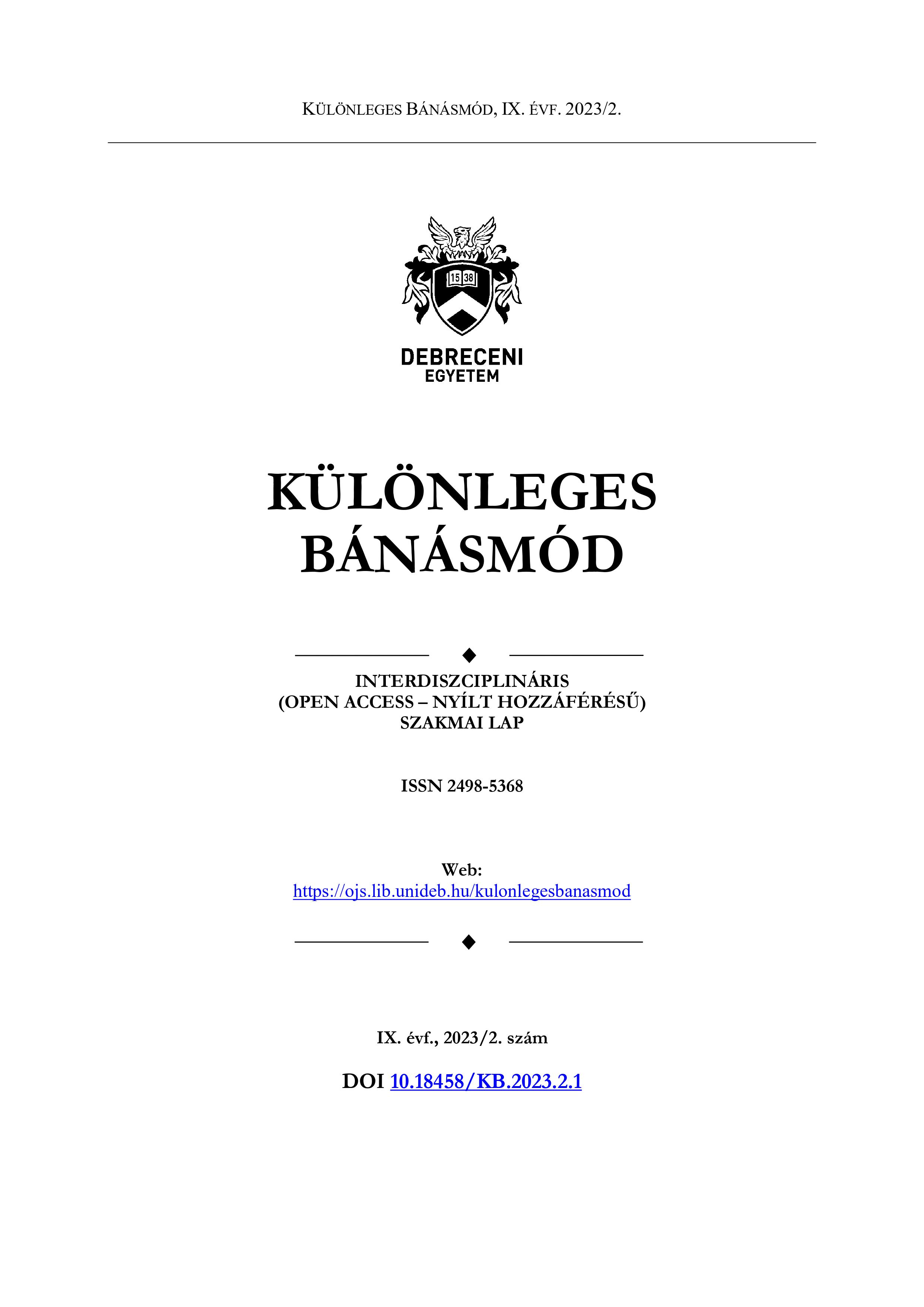A KÖTÖTT FORMÁJÚ MOZGÁSTEVÉKENYSÉG A SAJÁTOS NEVELÉSI IGÉNYŰ GYERMEKEK SZEMSZÖGÉBŐL
Szerző
Megtekintés
Kulcsszavak
Licenc
Copyright (c) 2023 Dr. Szilárd Zsuzsa

This work is licensed under a Creative Commons Attribution-NonCommercial-NoDerivatives 4.0 International License.
Hogyan hivatkozzuk
Absztrakt
Általánosan elfogadott tény, hogy minden gyermek különböző fejlődési ütemet követ. A testnevelésen, mozgástevékenységen való részvétel főszereplői a gyermekek és a pedagógus. A sajátos nevelésű igényű gyermekek számára a testnevelés, mozgástevékenységen való aktív részvétel, a pedagógusok számára pedig az adaptált testnevelés, mozgástevékenység megtartása jelenthetnek kihívást. A cikk fókusza a sajátos nevelésű igényű gyermekek fizikai aktivitása és azon módszerek, amelyek segítik őket az aktív életmód kialakításában. A tanulmány a testnevelés adaptálása és az egyénre szabott programok használatának jelentőségét hangsúlyozza annak érdekében, hogy minden gyermek sikeresen részt vegyen a testnevelési tevékenységekben. A téma azonban nem újkeletű, és a szerző rámutat a külföldi és hazai kutatásokra, amelyek a sajátos nevelésű igényű gyermekek kötött formájú fizikai tevékenységének fontosságát vizsgálják. Az újdonság azonban az, hogy a cikk a gyermek szemszögéből vizsgálja a témát és fókuszál a megoldásokra. A közlemény egy állandó folyamatot emel ki annak érdekében, hogy minden gyermek sikeresen részt vehessen a testnevelési tevékenységekben. A cikk részletesen tárgyalja a testnevelés, mozgástevékenység adaptálásának lehetőségeit, amelyek kielégítik a sajátos nevelésű igényű gyermekek egyedi igényeit, melyek a következő témaköröket érintik: a sajátos nevelésű igényű gyermekek jellemzői, a fizikai aktivitás fontossága, az adaptált testnevelési programok, a pszichomotoros területen belüli problémák kezelése, a sikeres részvétel biztosítása, valamint a módosítási lehetőségek és javaslatok.


 https://doi.org/10.18458/KB.2023.2.125
https://doi.org/10.18458/KB.2023.2.125